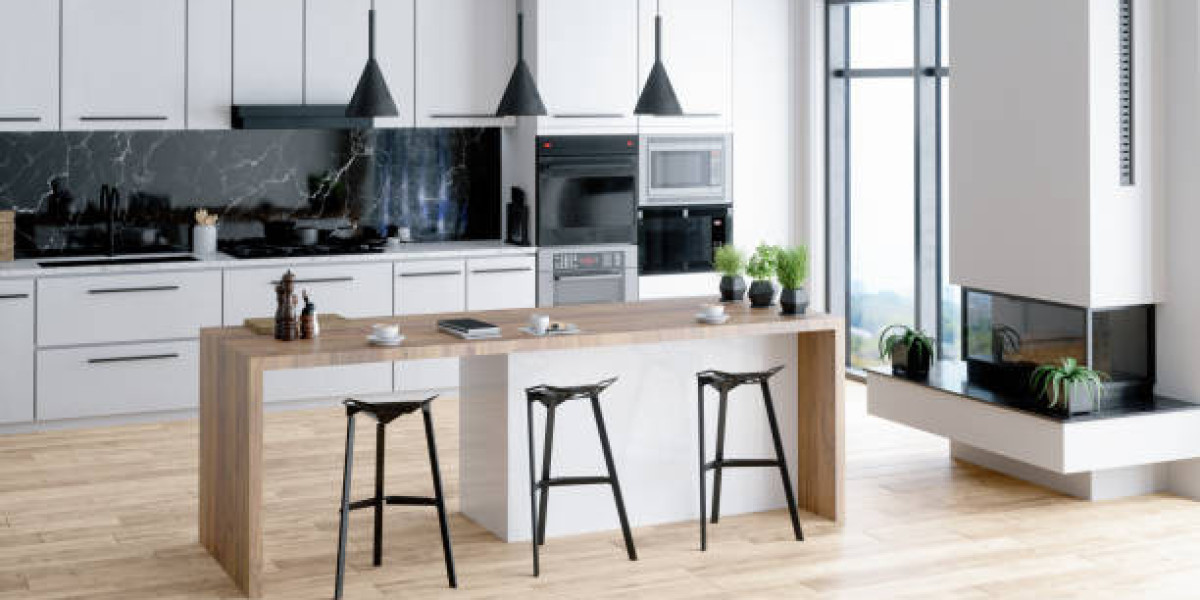Discover how I found the perfect kitchen flooring in Dubai. Follow my personal journey with expert tips, material comparisons, and design insights to help you choose the best option for your kitchen.
It all started with a renovation dream. After years of enduring cracked tiles and slippery surfaces, I finally decided to transform my outdated kitchen into a modern haven. The process was overwhelming, particularly when it came to selecting the right kitchen flooring. But today, I’m glad to share the lessons I learned during my search for the best kitchen flooring in Dubai.
Let me take you on that journey—from confusion to confidence—as I explored every detail, from material durability to local climate considerations. If you're in the same boat, this story is for you.
Understanding the Importance of Kitchen Flooring
When I first walked into the showroom, I was dazzled by the variety—vinyl, porcelain, hardwood, laminate, even engineered stone. But very quickly, I learned that kitchen flooring is not just about looks. It’s about balancing functionality with aesthetics. In Dubai, this becomes even more crucial due to the extreme climate, sandy winds, and heavy use of air conditioning.
After some research, I realized the right flooring could not only elevate the kitchen’s appearance but also enhance its safety and longevity. So, I made a checklist—durability, maintenance, cost, slip-resistance, heat resistance, and of course, design compatibility.
Step One: Evaluating the Climate in Dubai
Before choosing a material, I considered how the Dubai climate would affect my kitchen flooring. The UAE is hot for most of the year. This makes materials like solid wood tricky—they expand and contract with temperature changes. On the other hand, porcelain and ceramic tiles handle heat much better.
I consulted a few flooring specialists, and they confirmed what I suspected: for Dubai kitchens, it’s better to avoid materials that warp with humidity or dry air. This instantly helped me eliminate solid hardwood, even though I was initially drawn to its luxurious finish.
Step Two: Defining My Lifestyle Needs
Once I had climate-appropriate materials shortlisted, I had to ask myself—how do I use my kitchen? I cook daily, which means spills, splashes, and stains are common. I also have a child who often drops things, so durability was non-negotiable.
Tiles and vinyl immediately emerged as top contenders. Vinyl offered a cushioned feel and was incredibly easy to clean. Meanwhile, porcelain tiles promised resilience and a sleek appearance. Still, I wanted to be sure. So, I collected samples of each and observed them over a week—dropping water, oil, and even turmeric to test staining.
Step Three: Comparing Materials
Here’s a brief comparison I made during my decision-making phase:
Flooring Type | Pros | Cons |
Porcelain Tile | Heat-resistant, long-lasting, stylish | Cold underfoot, needs grout sealing |
Vinyl Flooring | Soft, budget-friendly, water-resistant | Can dent, looks less premium |
Laminate | Affordable, easy to install | Not ideal for humid spaces |
Engineered Stone | Elegant, extremely durable | Expensive |
Eventually, I narrowed it down to porcelain and high-grade vinyl. Both met Dubai’s requirements—heat-resistant, low maintenance, and visually pleasing. But there were still more layers to uncover before making a final choice.
Step Four: Visiting Local Dubai Showrooms
To truly appreciate the feel and appearance of kitchen flooring, I knew I had to see them in person. So I took a weekend to visit top flooring showrooms across Dubai, including Dragon Mart and some luxury interior design outlets in Al Quoz.
Walking barefoot on different textures gave me a new level of understanding. Some vinyl floors had a plasticky feel, while others were surprisingly premium. Porcelain tiles, on the other hand, had a crisp, clean finish that made my kitchen feel bigger and brighter.
At this point, I was leaning toward porcelain. However, I also kept an eye on installation costs and warranty options. In Dubai, some retailers offer full-service packages, which I found very helpful.
Step Five: Factoring in Style and Color
Now that the practicalities were covered, I focused on design. My kitchen theme was modern Arabic—white cabinets, brass hardware, and patterned backsplash. I needed kitchen flooring that complemented this without overwhelming it.
Porcelain tiles offered plenty of design choices—marble-look, concrete effect, even wood-look tiles. Vinyl was also versatile but leaned more toward modern industrial styles.
After laying out samples in my kitchen under different lighting conditions, I chose large-format porcelain tiles in a matte marble finish. Not only did it reflect light beautifully, but it also resisted showing stains and footprints—a big plus in a busy household.
Step Six: Installation Process in Dubai
The installation process was smoother than I expected. I hired a professional team recommended by the showroom. They arrived promptly, removed the old flooring, leveled the base, and installed the new tiles within three days.
One piece of advice I’d give anyone—check if your building management has specific regulations. Mine required prior approval and specific noise timing, which could have delayed the project if I hadn’t checked in advance.
Also, I insisted on sealing the grout to prevent water absorption and staining over time. In Dubai’s climate, especially with constant air conditioning, moisture can build up unnoticed.
Maintenance Tips I’ve Learned
After a few months of living with my new kitchen flooring, here are some tips I’ve picked up:
- Use a microfiber mop – It picks up dust and sand particles easily.
- Avoid harsh chemicals – Especially on porcelain tiles; they can dull the finish.
- Seal the grout every 1–2 years – It keeps the surface looking new and prevents mold.
- Use rugs near the sink and stove – They reduce wear and tear while adding a cozy touch.
Lessons and Final Thoughts
Looking back, I realize how crucial the selection process was. The wrong kitchen flooring could have meant slippery mornings, endless cleaning, or a complete mismatch with my décor. Instead, taking the time to understand the material, test samples, and consult local experts in Dubai helped me make an informed choice.
If you’re about to renovate or build your kitchen, don’t rush the flooring decision. Walk on the samples. Test them. Ask questions. Dubai has no shortage of high-quality flooring options, but it’s your lifestyle, climate awareness, and aesthetic goals that will ultimately lead you to the right choice.
So take it from someone who’s been there—choose your kitchen flooring with both your heart and your head. The right foundation sets the tone for your entire home.



